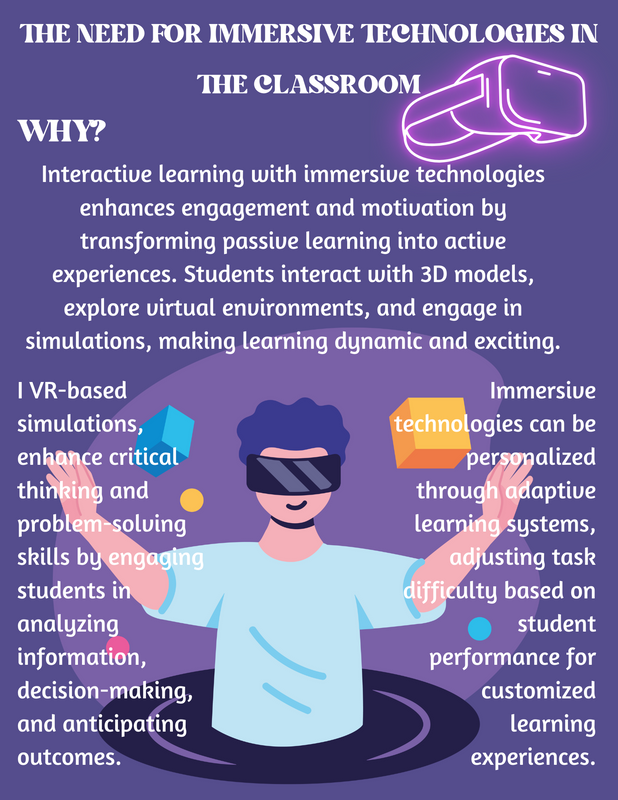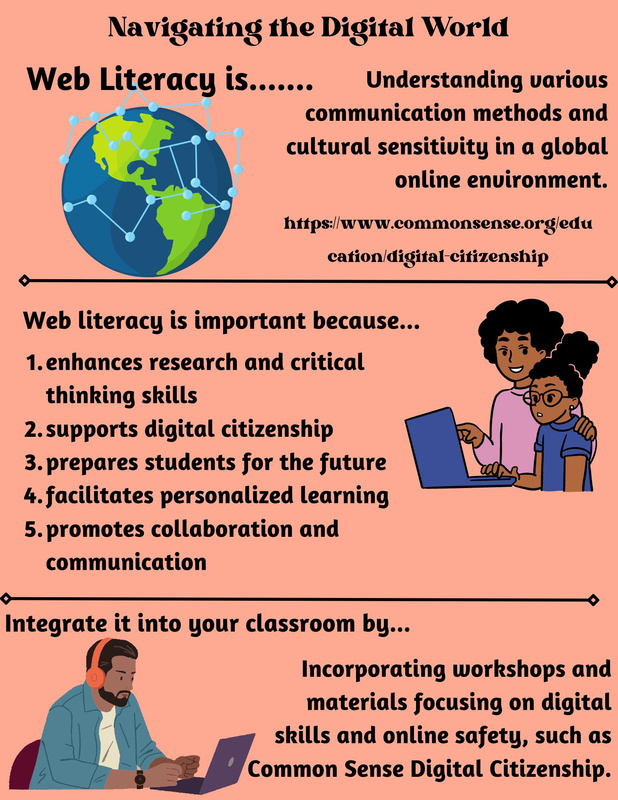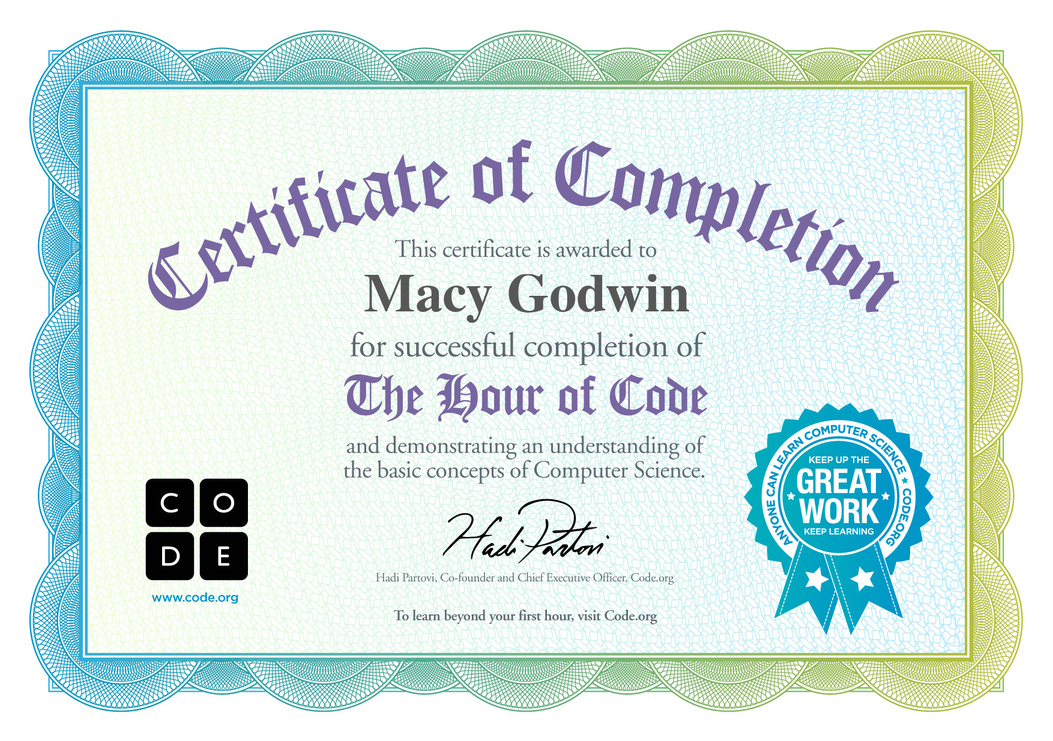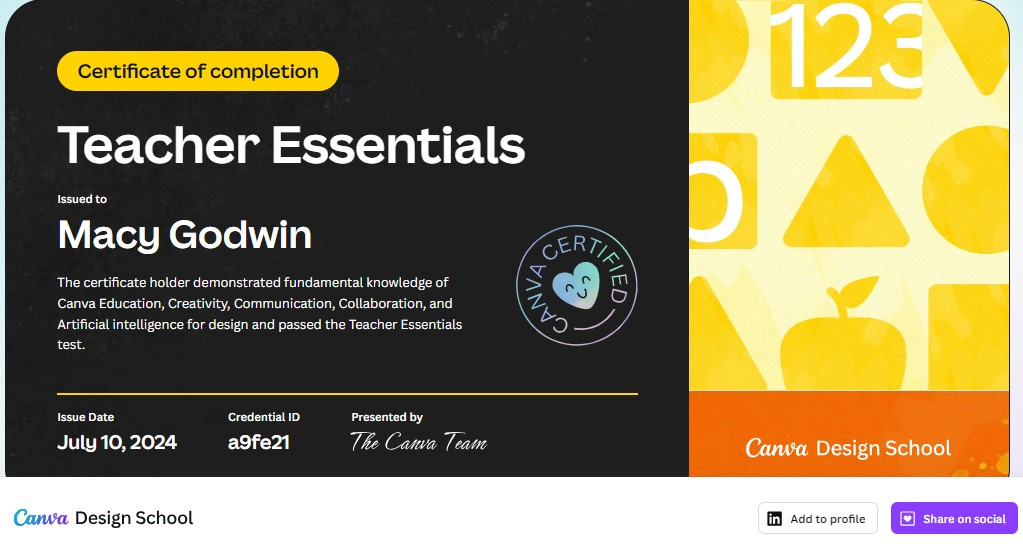learning and technology Portfolio



Macy Godwin
ou student
PEDAGOGY
Behaviorism, Connectivism, Constructivism
I studied these pedagogical concepts in my undergrad. Now, with teaching experience under my belt, it was nice to revisit these concepts reflect on what kind of teacher I am, and be conscious of what areas I need to grow in as an educator.
Reflecting on pedagogical concepts from my undergraduate studies has been enlightening. It's fascinating to see how my teaching style has evolved since then, and it's important to identify areas for growth as an educator. This journey of self-reflection helps me refine my teaching methods and enhance the learning experience for my students.
My Featured works
01

immersive technoligies
A handout on why you should use it
My Featured works
02

web literacy
A handout informing the reader of web literacy with resources
My Featured works
03
Classroom inclusivity
A handout discussing the importance of inclusivity in the classroom
HOUR OF CODE
This was new for me! I had never thought that this would be something I was capable of doing. I can’t wait to see how I will incorporate writing codes into my classroom!
The possibilities seem endless, from creating interactive lessons to developing engaging educational games that captivate my students' interest. I imagine the sheer excitement on their faces as they watch their own projects come to life.

canva certification
Canva is a great tool for teachers. I used it mainly to make presentations and daily agenda slides. After taking the Canva certification course, I now know of more ways to incorate it into student learning.
For instance, I've started creating interactive worksheets and engaging infographics that help students grasp complex concepts more easily. The drag-and-drop interface makes it simple to design customized visual aids that cater to different learning styles. Additionally, Canva has a treasure trove of templates for group projects and collaborative assignments, which encourages students to work together creatively.
I've also explored using Canva to design classroom posters and bulletin boards, turning the learning environment into a vibrant space that stimulates curiosity and excitement. With the ability to share designs directly with students, they can even take part in creating their own learning materials.
Overall, Canva has become an indispensable tool in my teaching toolkit!!!

Digital Citizenship
Digital Citizenship is among one of the most important topics I go over as a teacher. Because I am an English teacher, I do fulfill the requirement of going over digital citizenship with my students.
It's crucial for students to understand how their actions online can have real-world consequences. By teaching them about digital citizenship, I aim to instill values such as respect, empathy, and responsibility in their online interactions.
We discuss the importance of protecting personal information, recognizing credible sources, and understanding the implications of cyberbullying. My goal is to empower students to navigate the digital world safely and ethically. Through various activities and discussions, I encourage them to think critically about their online presence and the digital footprints they leave behind.
Resources I plan to use:
9 Resources for Teaching Digital Citizenship:
- https://iste.org/blog/9-resources-for-teaching-digital-citizenship
Common Sense Digital Citizenship Curriculum:
- https://www.commonsense.org/education/digital-citizenship
reflection
This class has given me the time and place to reflect on my integration of technology in the classroom. Simply using technology does not mean you are being meaningful in how you are using it.
It’s essential to consider how technology enhances the learning experience and supports educational goals. Effective integration involves thoughtful planning and a clear understanding of how digital tools can complement traditional teaching methods. For example, interactive apps can engage students in ways that textbooks cannot, while online collaboration platforms can foster teamwork and communication skills.
It's important to ensure that technology is accessible to all students, accommodating different learning styles and needs. By providing diverse resources, we can create an inclusive learning environment where every student has the opportunity to succeed. Reflecting on our practices and seeking continuous improvement helps us stay current with technological advancements and pedagogical strategies, ultimately benefiting our students.
Innovation in education isn't just about having the latest gadgets; it's about leveraging those tools to create meaningful, supportive, and enriching learning experiences. By staying curious and adaptable, we can inspire our students and prepare them for a future where technology is seamlessly integrated into every aspect of life.